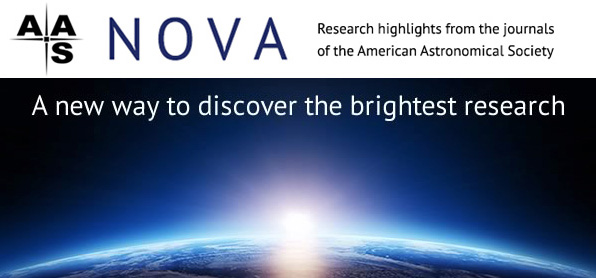Highlights from AAS Nova: 27 September - 10 October 2015

Susanna Kohler American Astronomical Society (AAS)
AAS Nova is a new website that provides brief highlights of recently published articles from the AAS journals. Its intent is to gain broader exposure for AAS authors and to provide astronomy researchers and enthusiasts with summaries of recent, interesting research across a wide range of astronomical fields.
The following are the AAS Nova highlights from the past two weeks; follow the links to read more, or visit the AAS Nova webpage for more posts.
9 October 2015
How to Blow a Bubble in a Galaxy
Recent high-resolution observations of Arp 220, a galaxy collision located a mere 250 million light-years away from us, have finally provided a closer look at what’s happening in the center of this merger.
7 October 2015
Warm Disks from Giant Impacts
New research suggests that observations of some warm debris disks around young stars might be a window into the late stages of terrestrial planet formation in these systems.
5 October 2015
A Tornado on the Sun
A team of researchers has analyzed images of a giant tornado forming on the surface of the Sun in an effort to better understand the evolution of such events.
2 October 2015
Geysers from the Tiger Stripes of Enceladus
Does the extreme surface terrain of Saturn’s moon Enceladus affect the locations and behavior of the geysers spewing material into space from its south polar region?
30 September 2015
A Pulsar Eases Off the Brakes
The sudden, unexpected outbursts exhibited by PSR 1846–0258 in 2006 may have permanently changed the behavior of this pulsar.
28 September 2015
Featured Image: The Q Continuum Simulation
The Q Continuum simulation is currently the largest cosmological simulation available, evolving (1,300 Mpc)³ and over half a trillion particles.


